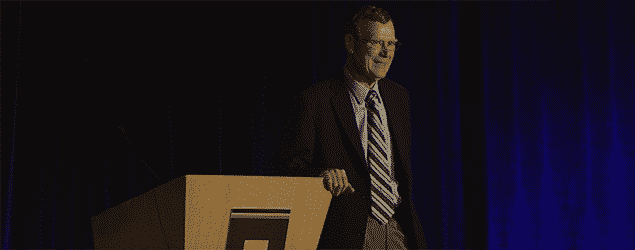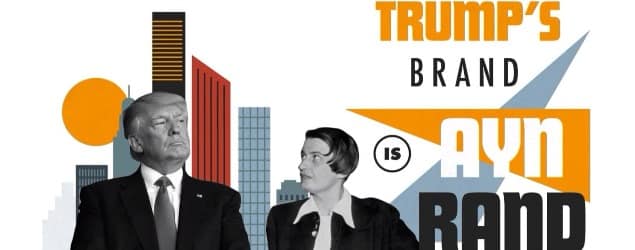Debt Denier Hall of Shame: Paul Krugman Edition

Paul Krugman doesn’t think that you can read. Or, at any rate, he doesn’t think you’ll bother to read the most recent long-term economic outlook from the Congressional Budget Office.
In his most recent column, the New York Times columnist argues that “the debt apocalypse has been called off,” accusing those who warn against an entitlement-driven debt disaster of stirring up irrational fears, not because we genuinely care about our well-being and the well-being of our kids and grandkids — but “because it [serves] a political purpose.”
It’s a nice bit of psychological projection. Because if there is any dishonesty in this debate, it’s not coming from those who think the CBO report gives us cause to worry — Krugman accuses us of “spinning” the report, which he says is “distinctly non-alarming” — it’s coming from Krugman, who seems desperate to deny that the welfare state faces a crisis in the decades ahead.
[D]ebt in 2039 — a quarter-century from now! — is projected to be no higher, as a percentage of G.D.P., than the debt America had at the end of World War II, or that Britain had for much of the 20th century.
Three points. First of all, notice how short-range in outlook we’re expected to be. Even if the 61-year-old Krugman isn’t too concerned about what happens in 2039, I’ll still be working and my daughter will still be young in 2039. And let’s remember that Krugman is among those who want us to sacrifice our standard of living because it might get warmer in a hundred years (a century from now!).
Second, he implies that the size of our debt at the end of World War II — more than two and one-half times our historical average — was no big deal. Maybe he thinks so. The CBO doesn’t. As it points out in its summary, when our debt-to-GDP ratio starts reaching the levels we saw after World War II (more than 100 percent of GDP), there are “significant negative consequences for both the economy and the federal budget.” As the CBO explains:
- The large amount of federal borrowing would draw money away from private investment in productive capital in the long term, because the portion of people’s savings used to buy government securities would not be available to finance private investment. The result would be a smaller stock of capital and lower output and income than would otherwise be the case, all else being equal. . . .
- Federal spending on interest payments would rise, thus requiring higher taxes, lower spending for benefits and services, or both to achieve any chosen targets for budget deficits and debt.
- The large amount of debt would restrict policymakers’ ability to use tax and spending policies to respond to unexpected challenges, such as economic downturns or financial crises. As a result, those challenges would tend to have larger negative effects on the economy and on people’s well-being than they would otherwise. . . .
In short, Krugman’s characterization is flat out wrong: the CBO does think World War II-level debt has the potential to harm American prosperity.
Finally, what Krugman doesn’t tell you is that the level of debt in 2039 will probably be far, far higher than World War II levels. The CBO actually gives several estimates of future debt levels, and the one Krugman has cherry-picked is what’s known as its “extended baseline scenario.” This projection assumes that current law will remain unchanged.
But as the CBO acknowledges, that’s unrealistic. So the report also includes what it calls the “extended alternative fiscal scenario,” which reflects the CBO’s more realistic assessment of future debt levels based on likely changes in the law. And there the outlook is far different. “With those economic changes incorporated, federal debt held by the public would exceed 180 percent of GDP in 2039, CBO projects.” (My emphasis.) That’s far higher than the baseline figure of 106 percent Krugman cites — and as the CBO goes on to note, things are projected to get worse from there. (There are also lower estimates in the report, but those depend on successfully addressing the very problems Krugman is telling us not to worry about.)
When debt levels start reaching 100 percent or more of GDP, then not only does the economy suffer for the reasons the CBO cited earlier, but the debt can spiral out of control. Bondholders can begin to doubt the government will make good on its debt and start demanding higher interest rates on bonds, which leads the debt to grow faster, which makes bondholders more skeptical, which leads to even higher interest rates, until potentially we could end up like Greece, or worse. Here’s the CBO’s assessment:
How long the nation could sustain such growth in federal debt is impossible to predict with any confidence. At some point, investors would begin to doubt the government’s willingness or ability to pay its debt obligations, which would require the government to pay much higher interest costs to borrow money. Such a fiscal crisis would present policymakers with extremely difficult choices and would probably have a substantial negative impact on the country.
And yet Krugman has the audacity to write:
Oh, and the budget office now expects interest rates to remain fairly low, not much higher than the economy’s rate of growth. This in turn weakens, indeed almost eliminates, the risk of a debt spiral, in which the cost of servicing debt drives debt even higher.
There is more to say about Krugman’s column. But what’s undeniable is that he is dishonestly trying to minimize how disastrous our present course is. That’s why I include him among my rogues gallery of “Debt Deniers” — those who seek to deny or minimize the welfare state crisis because, to quote a Nobel Prize-winning economist, “it [serves] a political purpose”: protecting and expanding the immoral welfare state.



